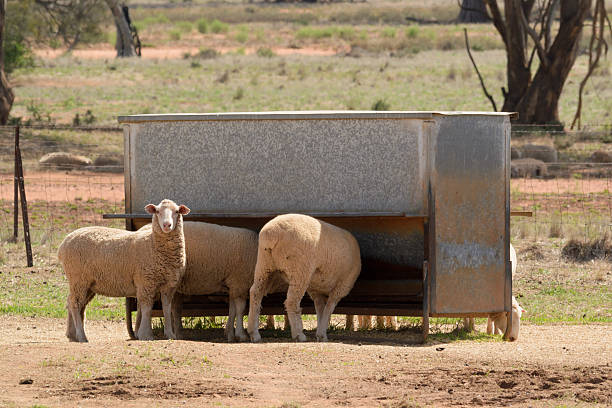As the price of conventional fodder and grain remain high there have been a number of reports of people sourcing or being offered alternative stockfeed. At a glance some of these alternatives appear to be good value but they may be of poor nutritional value for ruminants, more expensive on an energy basis and they bring with them the risk of toxicity and uncertain residue risks.
There are sources of alternative feeds such as large scale food processing plants that provide safe waste products, with a commodity vendor declaration form, but these are usually well and truly locked up by regular consumers of these by products.
The golden rule for buying any fodder is to compare the cost of energy on a dry matter basis or megajoule per kilogram of dry matter (MJ/kg DM). If you’re buying any feed ask for, or arrange to have the fodder/feed tested and this is especially important for alternative feeds. A feed test will enable you to compare the fibre, energy and protein content and is critical for any serious purchase of feed. Waste green or salad vegetables are around 90-95% water, containing 6-9 times the water content of hay at 10-15%, therefore these products would need to be very cheap to be a viable option. Transporting water in the form of fodder is not cost effective, especially when things are tight.
There are also health risks associated with unconventional feeds. Ruminants are not designed to suddenly change diet, so any dietary change should be done gradually as if you were introducing grain to avoid the risk of acidosis. There are also other health complications such as potatoes becoming lodged in the oesophagus leading to bloat. A cheap feed source can become quite expensive if you lose one or two cows.
As with all supplementary feed you should seek a commodity vendor declaration (CVD) before or at the time of buying fodder. Some chemicals currently registered for use on vegetables or fruits carry label directions that prohibit them from being fed to livestock after application. If you are unable to obtain a CVD risk assessments for differing commodities can be found on the SAFEMEAT website.
There are also relevant questions on the NVD regarding supplementary feed which ask “In the past 60 days, have any of the cattle/sheep or lambs in this consignment consumed any material that was still within a withholding period when harvested, collected or first grazed?”. If you don’t know, then you must answer ‘Yes’ to this question on the NVD. According to SAFEMEAT, after 60 days on residue free feed, stock are anticipated to meet Australian and international residue standards, however it does depend on the feed source. Make sure you check the SAFEMEAT risk assessment prior to feeding.
Any residue violation in an overseas market can shut the market down overnight and puts the reputation of all Australian produce at risk.
Before accepting the alternative fodder bargain, do your homework and ensure that it is suitable, safe and cost effective, or you may end up with sick, poorly grown, unmarketable stock.
